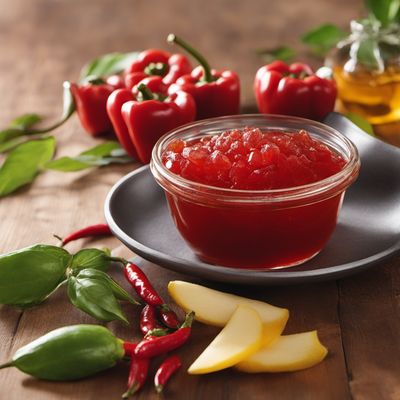
Dish
Pepper Jelly
Pepper jelly is a popular condiment in the southern United States, where it is often served with cream cheese and crackers as an appetizer. It can also be used as a glaze for meats, a topping for sandwiches, or a dip for vegetables. The sweetness of the jelly is balanced by the heat of the peppers, making it a great addition to both sweet and savory dishes. It is important to note that the heat level of the jelly can vary depending on the type of peppers used.
Origins and history
Pepper jelly is believed to have originated in the southern United States, where it has been a popular condiment for many years. It is often associated with the cuisine of Louisiana, where it is used in dishes like gumbo and jambalaya. However, it is now enjoyed all over the world and can be found in many different variations.
Dietary considerations
Pepper jelly is typically vegan and gluten-free. However, some recipes may contain added allergens, so it is important to check the ingredients. It is also high in sugar, so it should be consumed in moderation by those with diabetes or other conditions that require a low-sugar diet.
Variations
There are many different variations of pepper jelly, depending on the type of peppers used and the other ingredients added. Some recipes call for the addition of fruit, such as mango or pineapple, to add sweetness and complexity to the flavor. Others use different types of vinegar or spices to create a unique taste. Some recipes also call for the addition of pectin, which helps to thicken the jelly and give it a more jelly-like consistency.
Presentation and garnishing
Pepper jelly can be presented in a small jar or bowl, with a spoon for serving. It can also be used as a garnish for other dishes, such as deviled eggs or potato salad. To add a pop of color to the dish, a few sprigs of fresh herbs, such as parsley or cilantro, can be added as a garnish. When making pepper jelly, it is important to wear gloves when handling the peppers, as they can be very spicy and can irritate the skin. It is also important to use a candy thermometer to ensure that the jelly reaches the correct temperature for setting. Finally, it is important to sterilize the jars and lids before filling them with the jelly to prevent contamination.
Tips & Tricks
To reduce the heat level of the jelly, remove the seeds and membranes from the peppers before cooking them. For a milder flavor, use sweet peppers instead of hot peppers. Experiment with different types of peppers and spices to create your own unique flavor.
Side-dishes
Pepper jelly is often served with cream cheese and crackers as an appetizer. It pairs well with a variety of different cheeses, including brie, cheddar, and goat cheese. It can also be used as a topping for grilled chicken or fish.
Drink pairings
Pepper jelly pairs well with a variety of drinks, including white wine, beer, and cocktails. It can also be served with iced tea or lemonade for a refreshing summer drink.
Delicious Pepper Jelly recipes
More dishes from this category... Browse all »

Ajika
Georgian cuisine
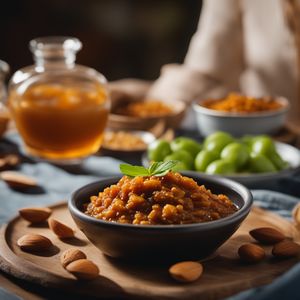
Almond Chutney
Indian cuisine

Amba
Middle Eastern cuisine

Amrood ki chutney
Indian cuisine
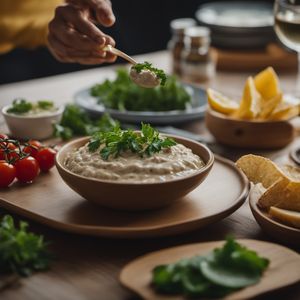
Anchoïade
French cuisine
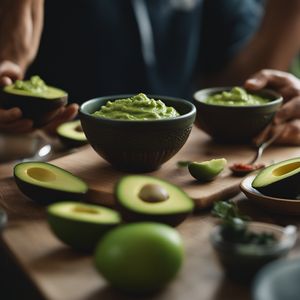
Avocado Chutney
Indian cuisine
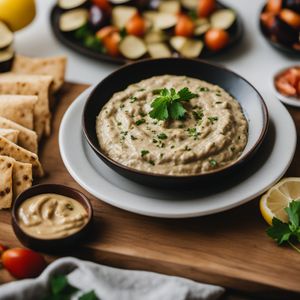
Baba ghanoush
Middle Eastern cuisine

Bagna càuda
Italian cuisine
More cuisines from this region...

Fusion cuisine
Bold, Unexpected, Innovative, Creative

Midwestern American cuisine
Savory, Hearty, Comforting, Rich, Creamy

Northeastern American cuisines
Salty, Sweet, Savory, Tangy, Creamy

Southern American cuisine
Savory, Spicy, Sweet, Tangy, Smoky

Southwestern American cuisine
Spicy, Bold, Smoky, Earthy, Tangy

Western American cuisine
Hearty, Flavorful, Savory, Spicy, Smoky
